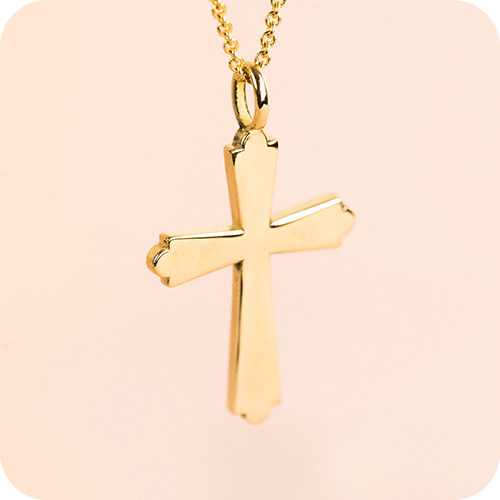Which Population Carries a Cross Pendant the Most?
Among various traditions and customs worldwide, the act of wearing a cross pendant holds a special place. Whether as a religious symbol or a fashionable accessory, this item draws attention to particular groups who are most likely to wear it. When discussing which population carries a cross pendant the most, we must consider various aspects such as regional practices, religious beliefs, cultural trends, and personal preferences.
The Role of Religious Belief
Religious practices significantly influence who wears a cross pendant. Christians in general wear it as an expression of faith. This is especially evident among Catholic or Protestant families, where a cross is often given as a gift at baptism or christening. For these individuals, it's not just jewelry but a powerful representation of their beliefs.
Catholic and Protestant Traditions
Catholics and Protestants have strong traditions involving the cross. A cross pendant serves as a visible sign of devotion and commitment to their faith. Particularly in countries with significant Christian populations like Italy, Spain, and Poland, it's common to see people wearing cross pendants daily. The meaning/significance of the cross in these communities cannot be understated; it’s a reminder of Jesus Christ's sacrifice and resurrection.
This practice extends beyond Sundays and religious gatherings. Many Catholics and Protestants incorporate the cross into their everyday attire, further solidifying its role as a popular piece of jewelry. It blends seamlessly into both casual and formal outfits, serving as a bridge between faith and fashion.
Orthodox Christians
Orthodox Christians also uphold the tradition of wearing a cross pendant. In countries like Russia, Greece, and Serbia, you'll find that almost every orthodox believer owns a cross pendant. These crosses often feature distinct designs reflective of their unique theological and cultural heritage. The orthodox cross itself has different variations, making it more specific and meaningful to those who follow this faith.
The cross is not merely ornamental for Orthodox Christians; it carries significant spiritual weight. Given at baptisms, passed down through generations, or bought during pilgrimages, these crosses symbolize protection, faith, and identity for millions of adherents around the world.
Crosses as a Style Choice
Beyond religious significance, the cross pendant has emerged as a notable fashion trend globally. Many people, regardless of their religious affiliation, choose to wear cross pendants purely for their aesthetic appeal. Fashion magazines, influencers, and celebrities have all contributed to this trend, showcasing how a simple cross can transform an outfit.
Symbol of Status and Style
For some, wearing a cross is about making a fashion statement. Luxury brands and designers frequently incorporate crosses into their collections, elevating them from symbols of faith to coveted fashion items. This is evident in fashion-forward cities like Paris, Milan, and New York. Here, the cross pendant evolves into a chic accessory found on runways and street style alike.
The widespread appeal of cross pendants demonstrates their versatility. They can be paired with elegant evening wear or edgy streetwear, resonating with diverse fashion sensibilities. What began as a religious emblem now occupies a significant space in contemporary fashion culture.
Cultural Influences
A closer look at different countries reveals how cultural contexts shape the popularity of cross pendants. For instance, in Latin America, the prominence of Catholicism ensures that crosses remain integral to both religious observance and daily life. Similarly, in parts of Africa and Asia where Christianity has a foothold, cross pendants mark important milestones and rites of passage.
Europe: Tradition Meets Modernity
In Europe, particularly southern regions like Spain, Portugal, and Italy, the cross remains an omnipresent symbol due to deep-rooted Catholic traditions. However, even in northern parts like the UK and Scandinavia, the cross's resurgence as a fashion accessory cannot be ignored. Here, the cross represents a blend of historical reverence and modern style.
Fashion houses based in Europe frequently draw inspiration from religious motifs, incorporating crosses into avant-garde designs. This fusion of tradition and innovation highlights the cross’s adaptation over time, maintaining its relevance across centuries.
North America: Diversity in Symbolism
In the United States and Canada, the cross pendant serves a dual role. With substantial Christian populations, many wear it as a testament to their faith. However, the diversity of the continent means that its use also branches out into broader social and cultural contexts. Cross pendants here might feature in hip-hop culture as bold jewelry pieces or appear in minimalist forms in mainstream fashion.
Whether featured in music videos, fashion shows, or social media posts, the cross pendant continues to capture public imagination. Its flexibility in design allows it to adapt to varying tastes, signifying anything from spiritual allegiance to mere artistic preference.
Crosses in Meaningful Moments
While fashion and religion dominate the reasons for wearing cross pendants, there are also deeply personal motivations behind this choice. For many, a cross pendant serves as a keepsake—reminding them of significant life events or loved ones. Such emotional connections add layers to why people wear cross pendants and make them cherished items.
Gifts and Heirlooms
Cross pendants often hold sentimental value as gifts. Be it for baptisms, christenings, confirmations, or weddings, they mark crucial milestones within Christian families. As a result, these crosses often become heirlooms, passed down through generations along with stories and memories. In many cultures, these gifts transcend their material value, embodying family legacy and continuity.
Moreover, the act of gifting a cross pendant signifies a wish for blessings and protection, emphasizing its importance beyond sheer aesthetics. Heirloom crosses carry historical and emotional significance, preserving familial ties and traditions.
Memorials and Personal Reminders
For others, wearing a cross is a way to honor or remember a loved one. It provides comfort and a sense of connection, especially during difficult times. Memorial crosses often include engravings or embellishments that personalize them further, cementing their status as treasured artifacts. These crosses serve as constant reminders of love, faith, and resilience in everyday life.
By merging tradition with personal experience, memorial crosses reflect individual journeys. They represent hope and offer solace, underpinning the universal appeal and enduring relevance of cross pendants.
The Global Presence of Cross Pendants
Overall, when analyzing which population carries a cross pendant the most, certain patterns emerge. While Catholics, Protestants, and Orthodox Christians prominently feature, the integration of cross pendants into global fashion indicates wider adoption. From Europe and North America to Latin America and beyond, these pendants traverse boundaries, blending religious significance with modern-day trends.
So, whether worn as a symbol of faith, a fashionable accessory, or a cherished memento, the cross pendant persists in its multifaceted roles. Across continents, cultures, and age groups, its presence endures, showcasing the intricate ways it interweaves with human identity and expression.




